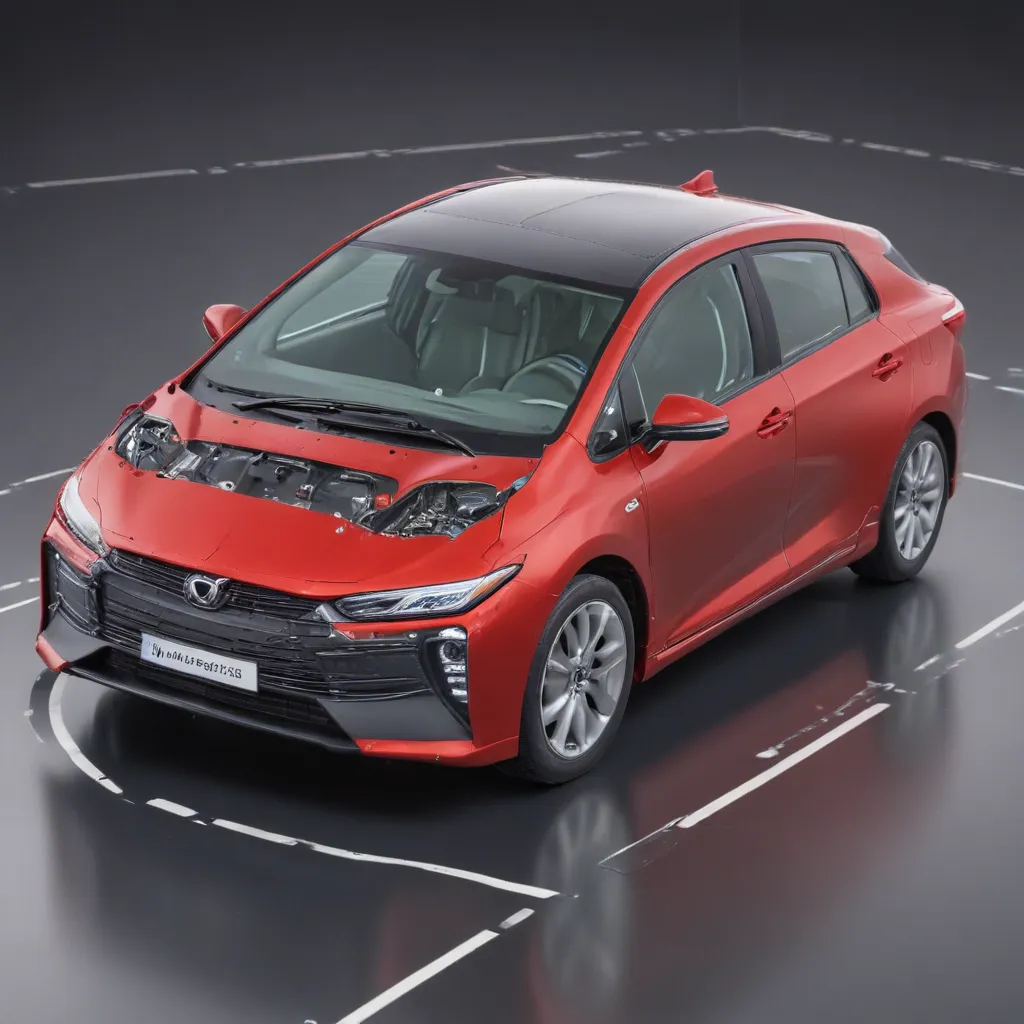
Ah, the world of hybrid vehicles – where electricity and gasoline coexist in a delicate dance, powering our journeys with a touch of futuristic flair. As the manager of an RV and fleet vehicle repair company in sunny Orange County, California, I’ve had the privilege of seeing the evolution of these eco-friendly marvels up close. From the sleek Toyota Priuses zipping down the 405 to the rugged Ford Explorers and Chevy Silverados that make up the backbone of our local fleets, these hybrids have become a ubiquitous presence on our roads.
Understanding the Hybrid Powerhouse
But let me tell you, repairing these hybrid beasts is no easy feat. It’s like unraveling the mysteries of the universe, one component at a time. You see, a hybrid vehicle is essentially two machines in one – an internal combustion engine and an electric motor, working in harmony to propel the vehicle forward. This intricate interplay of systems, from the high-voltage batteries to the regenerative braking, can make troubleshooting a real head-scratcher.
One of the biggest challenges we face is pinpointing the root cause of an issue. Is it a problem with the battery pack? The inverter? The electric motor? Or could it be something more elusive, like a software glitch or a communication breakdown between the various electronic control units (ECUs)? It’s enough to make even the most seasoned mechanic scratch their head and mumble a few choice words under their breath.
Mastering the Hybrid Diagnostic Dance
That’s where our team of hybrid vehicle experts comes in. We’ve honed our skills, spending countless hours poring over service manuals, attending specialized training sessions, and getting our hands dirty with the latest diagnostic equipment. It’s a delicate dance, really, as we navigate the intricate web of sensors, actuators, and computer modules that make up the hybrid powertrain.
Take, for example, the case of a customer who brought in their Toyota Prius with a strange “check engine” light. At first glance, it could have been anything – a faulty oxygen sensor, a loose gas cap, or even a problem with the catalytic converter. But we knew better. We donned our thinking caps and methodically went through the diagnostic process, hooking up the vehicle to our state-of-the-art scanners and analyzing the trouble codes.
Uncovering Hidden Electrical Gremlins
After some careful investigation, we discovered that the issue was with the hybrid battery pack. One of the individual cells had developed an internal fault, causing the overall pack voltage to drop and triggering the warning light. Had we not been diligent in our approach, we might have missed this subtle clue and ended up replacing expensive components unnecessarily.
And let me tell you, hybrid electrical systems can be a real minefield. It’s not uncommon for us to encounter strange electrical gremlins that defy conventional troubleshooting methods. Take, for instance, the case of a fleet Chevy Silverado Hybrid that was experiencing intermittent power loss while driving. Our team spent hours tracing the wiring, testing the components, and even swapping out the high-voltage battery pack, but the problem persisted.
Harnessing the Power of Collaboration
It wasn’t until we collaborated with the manufacturer’s technical support team that we finally got to the bottom of the issue. Turns out, there was a software bug in the vehicle’s energy management system that was causing the hybrid powertrain to go into a protective mode and reduce power output. A simple software update from the dealer resolved the problem, and the customer was back on the road in no time.
These kinds of challenges are why I’m so proud of the technicians at our RV and fleet vehicle repair shop. They’re not just mechanics – they’re hybrid detectives, master problem-solvers, and true artists in their craft. They understand that repairing these cutting-edge vehicles requires a unique blend of technical expertise, diagnostic wizardry, and good old-fashioned tenacity.
Embracing the Future of Mobility
And as the world of transportation continues to evolve, with electric vehicles and plug-in hybrids gaining momentum, I can’t help but feel excited about the future. These are the vehicles that will shape the way we commute, travel, and experience the open road. And you can bet that our team at Orange County RV Repair will be ready to tackle whatever challenges come our way.
So, if you’re the proud owner of a hybrid RV, or if your fleet is made up of these fuel-sipping marvels, don’t hesitate to bring them to us. We’ll put on our detective hats, dive into the nitty-gritty, and make sure your ride is running like a well-oiled hybrid machine. After all, the future of sustainable mobility is in our hands, and we’re ready to lead the charge.
